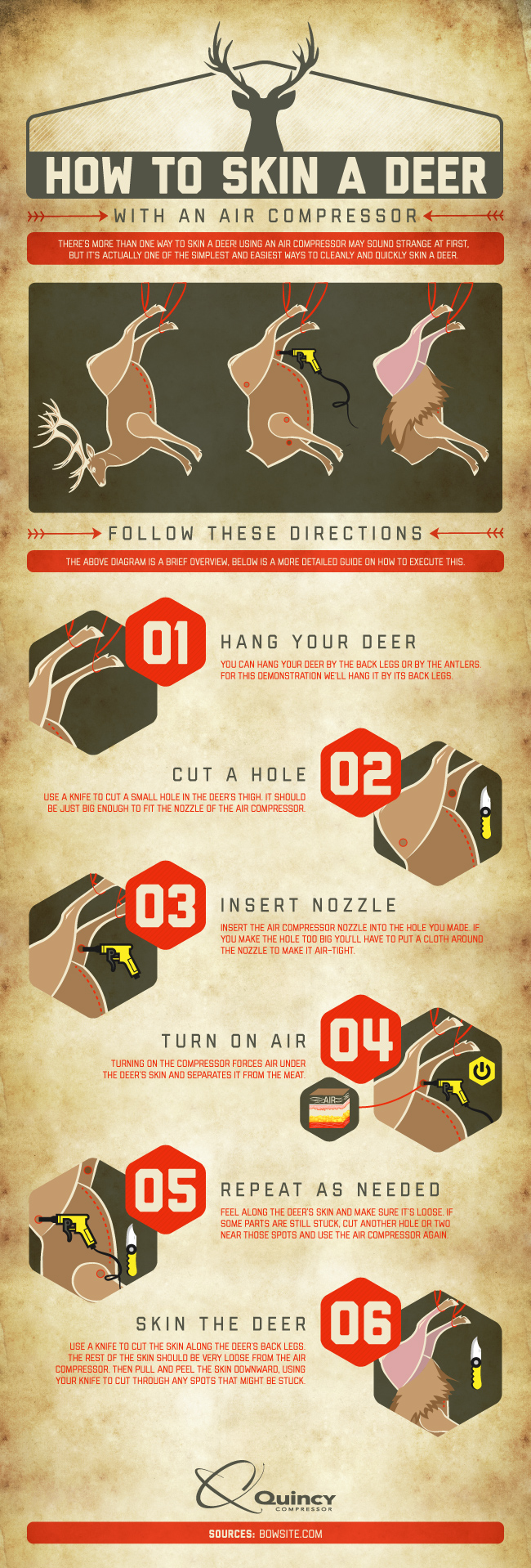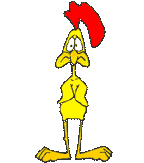“Using an air compressor to skin a deer may sound strange at first,” notes Quincy Compressor, “But it’s actually one of the simplest and easiest ways to cleanly and quickly skin a deer after your hunt.”
What does deer hunting have to do with air compressors? More than you might think. The saying “there’s more than one way to skin a cat” also applies to deer… literally!
Using an air compressor to skin a deer may sound strange at first, but it’s actually one of the simplest and easiest ways to cleanly and quickly skin a deer after your hunt. Check out our new infographic and learn for yourself:
How to Skin A Deer With An Air Compressor by Quincy Compressor is licensed under a Creative Commons Attribution 4.0 International License.
- Hang Your Deer
You start out the same way you would normally skin a deer. There are different thoughts about if it’s better to hang the deer head up or head down, but we’ve found that when you’re using an air compressor it doesn’t make a difference. Pick whichever way you’d like or are used to and hang the deer at a level where you can easily reach the whole thing.
- Cut A Hole
Once your deer is hanging securely, it’s time to make the first cut. Use a knife to cut a small hole in the skin that covers the deer’s thigh. This hole should be just big enough to fit the nozzle of the air compressor. Ideally you want to make it so that no air can get out once you have the nozzle in. If you find that you’ve made the hole too big you can put a piece of cloth or tape around the nozzle so it fits.
- Insert Nozzle
Next, simply insert the nozzle from the air compressor into the hole you made in the deer’s thigh. If it doesn’t fit, either make the hole larger or use tape or cloth around the nozzle to make it air tight.
- Turn On The Air
Now it’s time for the fun part. Turn on the air compressor and watch as the deer starts to puff up light a balloon!
What happens is that the force of the air pushes under the skin and causes it to push itself off of the meat. The air separates the skin cleanly and neatly without causing any meat to go to waste.
- Repeat As Needed
Usually this works very well, but every once in a while there will there be parts that are still stuck. If that happens, simply cut another whole near that spot and repeat the previous steps. After doing this a couple times you’ll have the skin completely separated from the rest of the deer.
- Skin The Deer
Last, all you have to do is cut the skin along the deer’s back legs and then start to peel. The skin should be very loose from the air. Start at the top and peel the skin downward. Use a knife to cut through any spots that still might be stuck.
Then just like that, you’re done! You’ll have a perfectly skinned dear without any wasted meat.
Happy Hunting!




